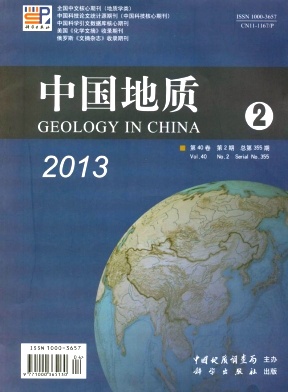HE Peng1, YAN Guang-sheng2, ZHU Xin-you3, ZHANG Zhong-yi3, WANG Yan-li3, CHENG Xi-yin3, LI Yong-sheng2, ZHEN Shi-min1, DU Ze-zhong1, JIA De-long1, GONG Xiao-dong1. Fluid inclusion study of the Saishitang Cu deposit in Qinghai[J]. Geology in China, 2013, 40(2): 580-593.
| Citation: |
HE Peng1, YAN Guang-sheng2, ZHU Xin-you3, ZHANG Zhong-yi3, WANG Yan-li3, CHENG Xi-yin3, LI Yong-sheng2, ZHEN Shi-min1, DU Ze-zhong1, JIA De-long1, GONG Xiao-dong1. Fluid inclusion study of the Saishitang Cu deposit in Qinghai[J]. Geology in China, 2013, 40(2): 580-593.
|
Fluid inclusion study of the Saishitang Cu deposit in Qinghai
-
HE Peng1, YAN Guang-sheng2, ZHU Xin-you3, ZHANG Zhong-yi3, WANG Yan-li3, CHENG Xi-yin3, LI Yong-sheng2, ZHEN Shi-min1, DU Ze-zhong1, JIA De-long1, GONG Xiao-dong1
-
1. School of Earth & Resources, China University of Geosciences, Beijing 100083, China;2. Development and Research Center, China Geological Survey, Beijing 100037, China.; 3. Beijing Institute of Geology and Mineral Resources, Beijing 100012, China
-
Abstract
Abstract:The fluid inclusions in the Saishitang Cu deposit can be classified into liquid-rich two-phase, gas-rich two-phase and daughter mineral-bearing polyphase types. According to studies of petrography, microthermometry and laser Raman spectrographic analyses of fluid inclusions in garnet and diopside from skarn and sulflde-rich quartz veins, the fluid inclusion homogenization temperatures and salinities of the early skarn stage vary in the range of 436℃-562℃ and 34 %-45%wt%NaCl eqv. respectively, indicating that the fluid is dominated by magmatic water characterized by high temperature and high salinity; the fluid inclusion homogenization temperatures and salinities of the retrogressive metamorphic stage vary in the range of 322℃-419℃ and 15%-39%wt%NaCl eqv. Respectively; the fluid inclusion homogenization temperatures and salinities of the sulfide stage vary in the range of 235℃-366℃ and 5%~36%wt%NaCl eqv. respectively. Laser Raman spectrogtaphic analyses show that the gas phase components of fluid inclusions are mainly composed of CH4, H2S, CO2 and H2O, and the ore-forming fluids belong to the NaCl-H2O-CH4-H2S-CO2 system. The boiling event of ore-forming fluid occurred at temperatures of 290℃~360℃, resulting in the formation of massive metal sulfides. The fluid boiling was favorable for the formation of the Saishitang Cu deposit.
-

-
-
Access History







 DownLoad:
DownLoad: